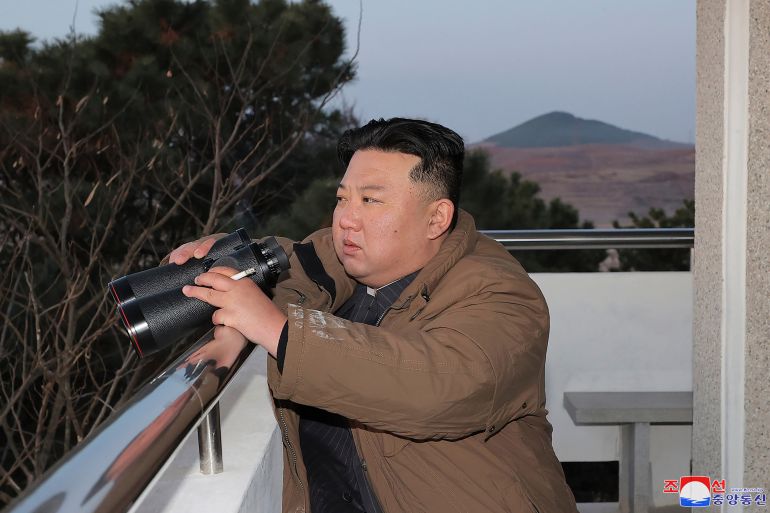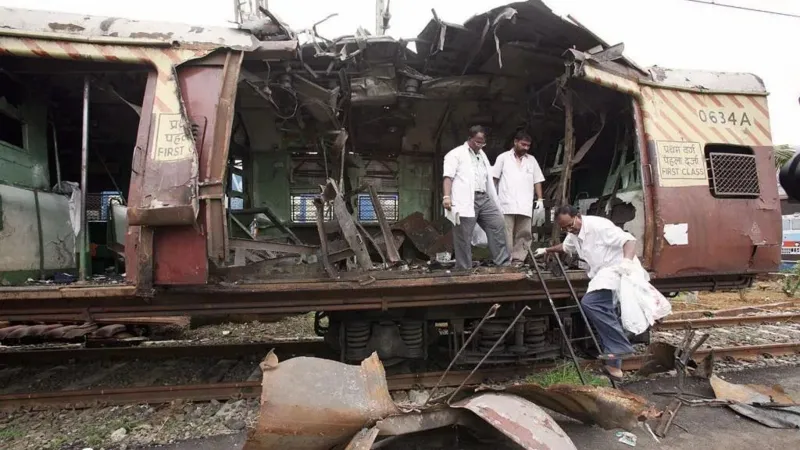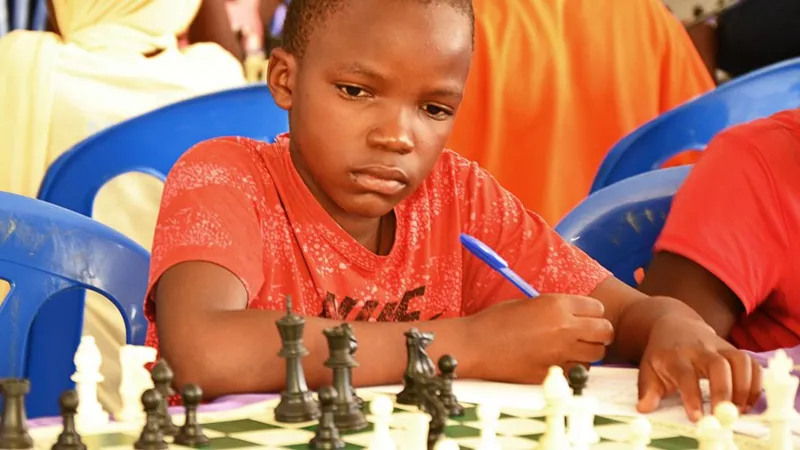N Korea’s Kim led drills ‘simulating nuclear counterattack’: KCNA
Latest show of force from Pyongyang comes as it bristles at military drills by South Korea and the US.

North Korean leader Kim Jong Un has supervised two days of drills “simulating a nuclear counterattack” — including the firing of a ballistic missile carrying a mock nuclear warhead — according to state news agency KCNA, as South Korea and the United States continued their own military exercises.
Kim expressed “satisfaction” over the weekend launches, which were held to “let relevant units get familiar with the procedures and processes for implementing their tactical nuclear attack missions”, KCNA reported on Monday.
The agency shared photos of Kim at the test, again with his young daughter, as flames roared from the soaring missile before it hit the target. In the exercises, a ballistic missile equipped with a mock nuclear warhead flew 800km (497 miles) before hitting a target at an altitude of 800m (2,625ft), it said.
“The nuclear force of the DPRK will strongly deter, control and manage the enemy’s reckless moves and provocations with its high war readiness, and carry out its important mission without hesitation in case of any unwanted situation,” Kim was quoted as saying, using the acronym of his country’s official name, the Democratic People’s Republic of Korea.
The drills were the fourth show of force from Pyongyang in a week and came as South Korea and the US stage their own military manoeuvres — known as Freedom Shield — which North Korea sees as a rehearsal for an invasion and a hostile act.
On Sunday, the two allied countries staged air and sea drills involving US B-1B strategic bombers, and their navies and marine corps are set to start the large-scale Ssangyong amphibious landing exercises on Monday. The drills, the biggest in five years, will continue for two weeks until April 3.
“The Kim regime knows when and how it has misrepresented and exaggerated its deterrent capabilities but can’t be sure what Washington and its allies actually know,” Leif-Eric Easley, a professor at Ewha University in Seoul told Al Jazeera by email. “So Pyongyang tries to portray its so-called tactical nuclear counterstrike as an overwhelming response available to counter the significant capabilities featured in U.S.-South Korean defense exercises.”
Last month, the US and South Korea held tabletop exercises simulating North Korea’s nuclear attack amid South Korean President Yoon Suk Yeol’s push for more confidence in US extended deterrence — its military capability, especially nuclear forces, to deter attacks on its allies.
This is turning the Korean peninsula into “a flashpoint with higher potential for a nuclear war”, Lim Eul-chul, a professor at Kyungnam University’s Institute for Far Eastern Studies told the AFP news agency.
“As the intensity of the South Korea-US exercises increases, the possibility of unforeseen situations increases, and as a result, mutual physical clashes may occur,” he said.
South Korea and Japan have also moved to boost security cooperation amid the North Korean weapon tests, putting aside decades of historical grievances.
North Korea is banned from testing ballistic missiles under successive UN sanctions over its nuclear weapons programme.
Last week, Pyongyang fired its largest and most powerful intercontinental ballistic missile (ICBM), the Hwasong-17, its second such test this year.
The UN Security Council is expected to hold an emergency meeting on Monday over the ICBM launch at the request of the US and Japan, according to the South Korean Yonhap news agency.
-al jazeera







